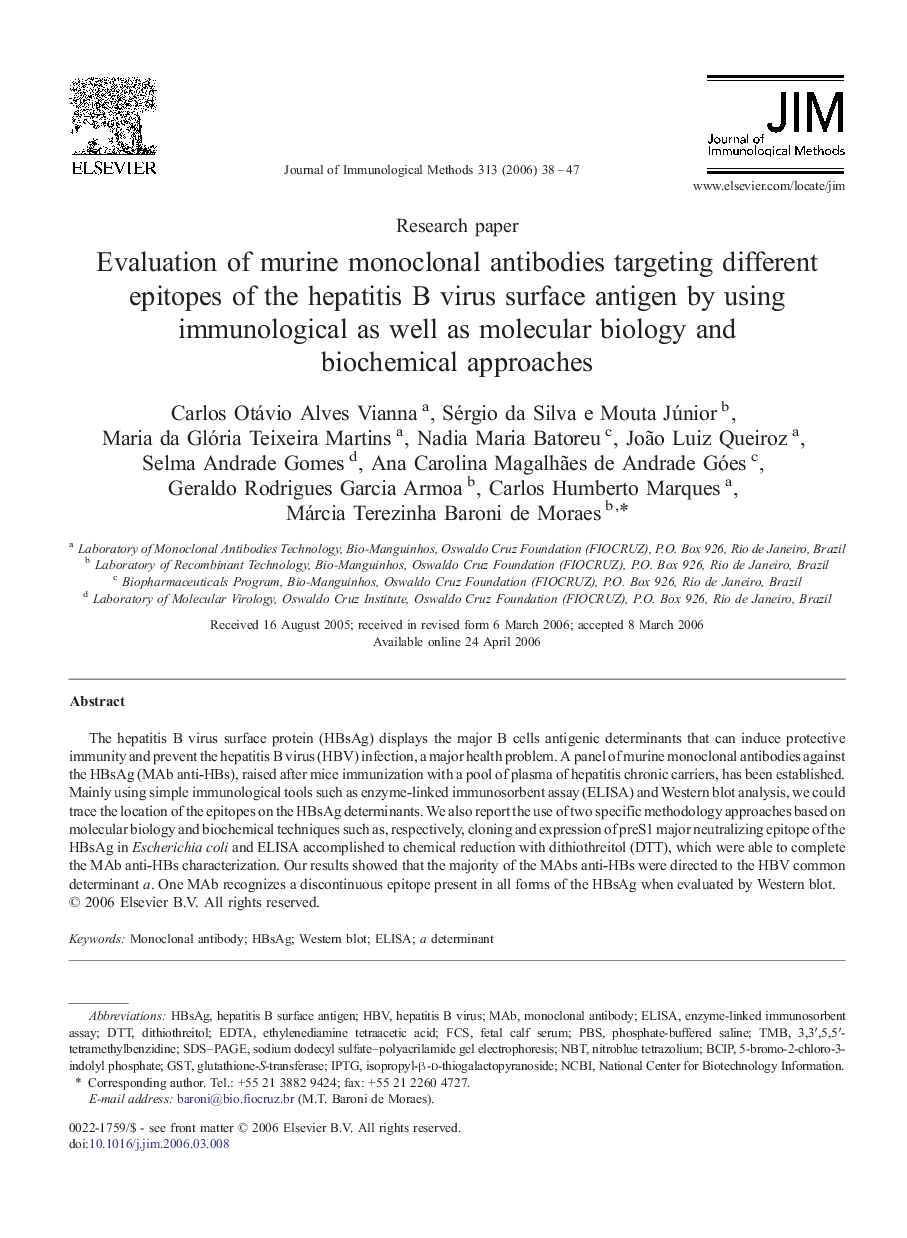| Article ID | Journal | Published Year | Pages | File Type |
|---|---|---|---|---|
| 2089344 | Journal of Immunological Methods | 2006 | 10 Pages |
The hepatitis B virus surface protein (HBsAg) displays the major B cells antigenic determinants that can induce protective immunity and prevent the hepatitis B virus (HBV) infection, a major health problem. A panel of murine monoclonal antibodies against the HBsAg (MAb anti-HBs), raised after mice immunization with a pool of plasma of hepatitis chronic carriers, has been established. Mainly using simple immunological tools such as enzyme-linked immunosorbent assay (ELISA) and Western blot analysis, we could trace the location of the epitopes on the HBsAg determinants. We also report the use of two specific methodology approaches based on molecular biology and biochemical techniques such as, respectively, cloning and expression of preS1 major neutralizing epitope of the HBsAg in Escherichia coli and ELISA accomplished to chemical reduction with dithiothreitol (DTT), which were able to complete the MAb anti-HBs characterization. Our results showed that the majority of the MAbs anti-HBs were directed to the HBV common determinant a. One MAb recognizes a discontinuous epitope present in all forms of the HBsAg when evaluated by Western blot.
